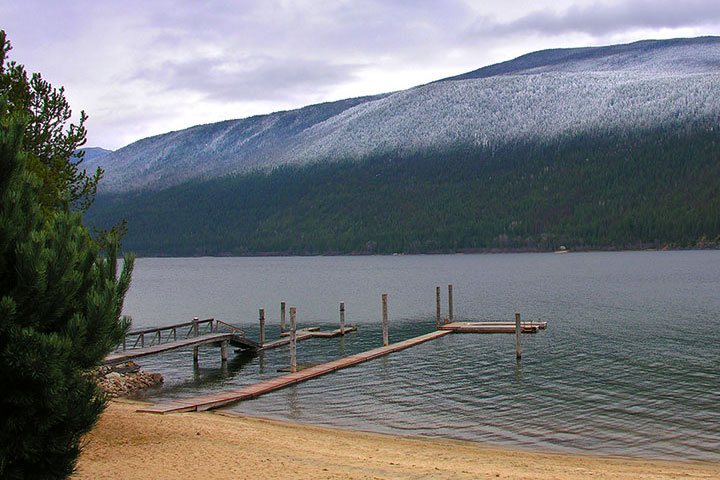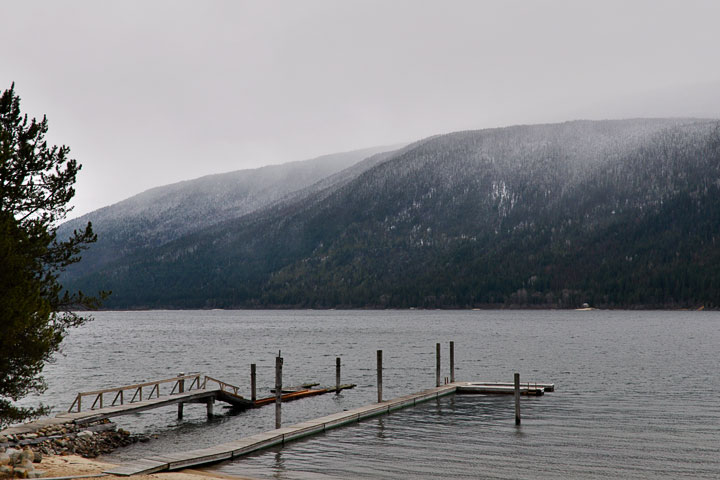In early November, snow is high in the mountains; by late November, it has descended to lake level. Between those occasions, the mountainside presents a canvas upon which two distinctly different patterns of white are painted.
Rime on the mountainside (first picture below) presents a sharp transition—white above the 0°C isotherm, dark below. The stratus cloud which left this pattern will have extended both above and below the transition, but the rime only forms when the temperature is less than 0°C and supercooled cloud drops freeze onto the trees. Although this pattern is often supposed to result from snow, it does not.
Falling snow leaves a gradual transition between white and dark on the mountainside (second picture). For various reasons, the snow does not melt instantly when it falls below the 0°C isotherm, but only gradually makes the transition into a rain shower. The pattern on the mountainside reflects this and is clearly different than that produced by rime.
These issues are explored in greater depth and with more pictures on the Kootenay Lake website on a page entitled, Snow level, Rime, and Virga.
Rime on a mountainside presents a sharp transition

Snow on the same mountainside presents a gradual transition

